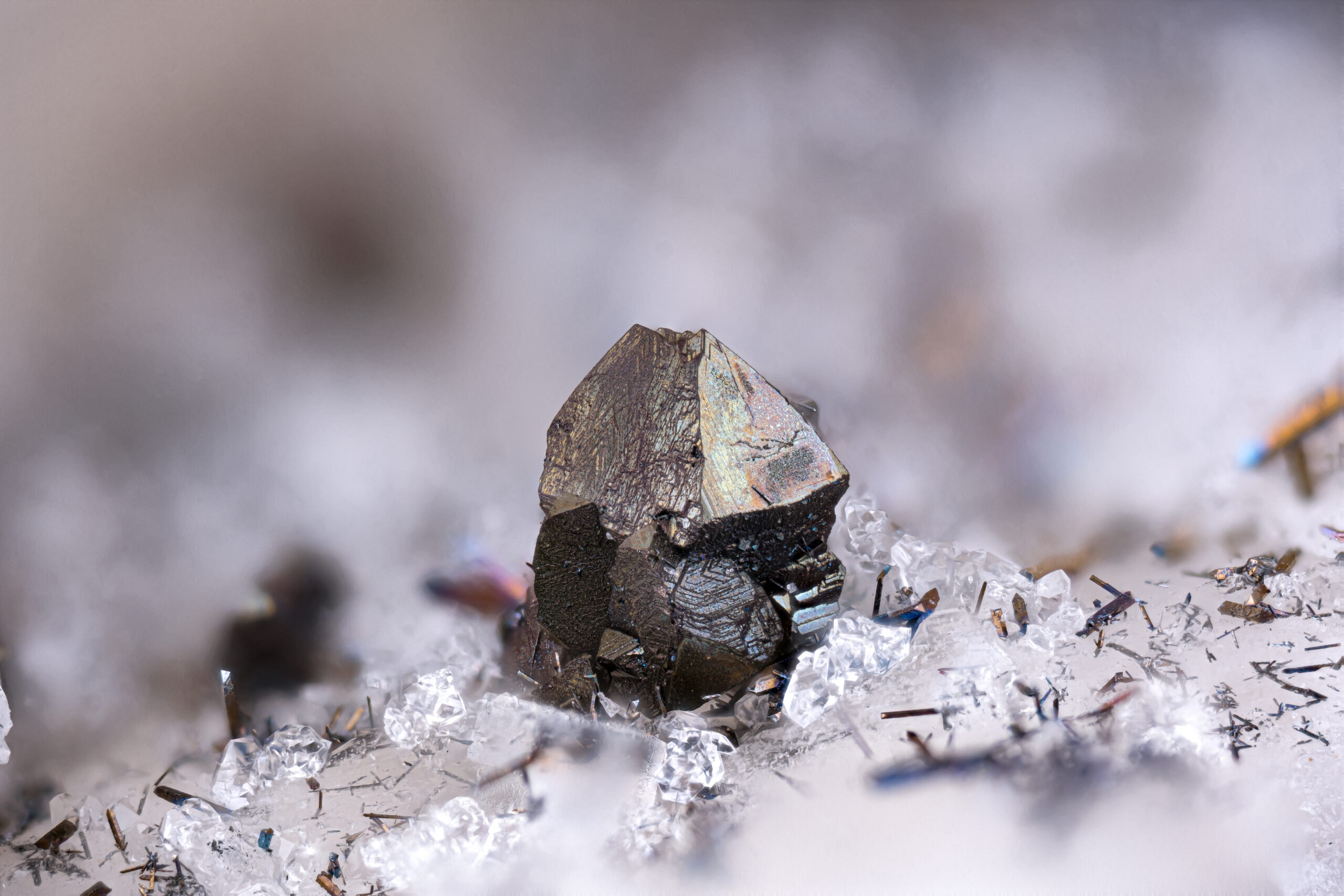Energy
Richard Pearson: The Tritium Cycle – The Hidden Challenge for Commercial Fusion

This article has been translated using artificial intelligence Fusion energy is a global promise -but also a monumental challenge. To turn it into a clean, abundant, and safe energy source, mastering plasma is not enough: we must learn how to fuel and sustain that system for decades. That’s the key point raised by Richard Pearson, […]
This article has been translated using artificial intelligence
Fusion energy is a global promise -but also a monumental challenge. To turn it into a clean, abundant, and safe energy source, mastering plasma is not enough: we must learn how to fuel and sustain that system for decades. That’s the key point raised by Richard Pearson, former co-founder of Kyoto Fusioneering and professor at Eindhoven University of Technology, during his talk at the Future Trends Forum Fusion Energy.
Pearson tackles one of the most complex and least discussed topics in the public debate on fusion: the tritium cycle. He calls it “the elephant in the room” of fusion. Without an integrated and efficient management of this radioactive isotope—from its production and reuse to its safe storage—no reactor will be able to operate viably at commercial scale.
If you want to watch Richard Pearson’s presentation, you can do so in this video:
Richard Pearson: “Tritium Management and Closed Thermal Cycles” #FusionForward
Why Tritium Matters
Tritium (³H) is a radioactive isotope of hydrogen -and the key ingredient in the most advanced fusion reaction to date: deuterium-tritium (DT). This reaction, which fuses one deuterium nucleus with one tritium nucleus to release vast amounts of energy, is currently the closest path to commercially viable fusion power. Its main advantage: it requires comparatively “lower” temperatures than other alternatives, making it technically achievable within the coming years.
But here lies the problem: tritium is extremely hard to obtain. It’s scarce in nature, has a short half-life (around 12 years), is highly radioactive, and difficult to contain -it permeates materials and easily contaminates systems. In Pearson’s words, it’s a substance that “gets into everything”, forcing every reactor system to handle, monitor, and most importantly, prevent its loss.
Tritium also poses safety risks. Its radioactivity means any leak can create operational and regulatory challenges. And the issue isn’t only technical -it’s economic. Tritium is extraordinarily expensive to produce with current methods, and unless it’s almost perfectly recycled, reactor operating costs would become prohibitive.
That’s why tritium management isn’t just an engineering challenge -it’s a precondition for fusion’s viability at economic, operational, and regulatory levels. Ignoring it would be like building a rocket without thinking about the engines: you can have an impressive spacecraft, but it will never take off.
The Tritium Cycle: A Complex Chain
One of Pearson’s key messages is that the tritium system must be a closed loop, integrated into reactor design from day one. It cannot be an add-on. Because in fusion, every gram counts.
The complexity of this system lies in the fact that tritium is not used and discarded -it’s continuously recycled. A fusion plant must keep in constant circulation the tritium that enters, that’s produced, that isn’t burned, and that’s released.
To achieve this, it needs multiple subsystems operating in perfect coordination:

1. Fuel System
This is the entry point for tritium into the reactor. Here, it is mixed with deuterium and injected into the plasma. The system must precisely control the injection rates and ratios to keep the reaction stable and continuous.
2. Plasma and Exhaust
Once injected, only a portion of the tritium actually fuses. The rest exits the plasma along with other gases -unreacted deuterium, helium, and small amounts of hydrogen. All of this gas must be efficiently captured for reuse.
3. Vacuum and Cleanup Systems
Residual gases are extracted through vacuum systems that direct them to purification modules. There, the different hydrogen isotopes are separated so that the tritium can be recovered.
4. Isotopic Separation
A technically demanding process. Extracting tritium from the gas mixture requires extremely precise and efficient methods. Any loss here is a direct loss of both fuel -and money.
5. Storage and Reinjection
Once separated, tritium is securely stored and prepared for reinjection into the system. The storage process must prevent permeation and leaks while ensuring real-time monitoring and traceability.
6. Breeding Blanket
One of the greatest challenges: producing more tritium than is consumed. The breeding blanket, a structure surrounding the plasma, uses the neutrons generated during fusion to produce tritium from lithium. It also extracts heat from the reaction, which is later converted into electricity.

7. Extraction of Generated Tritium
The tritium produced in the blanket must be extracted from the coolant -typically helium or water- without escaping or contaminating the system. This must happen continuously and efficiently to keep the cycle balanced.
8. Detritiation Systems
Since tritium can contaminate both water and air, specialized modules are needed to remove it before it poses any risk of leakage into the environment.
9. Waste Management
Finally, any material that has absorbed tritium -from filters to structural components- must be treated as radioactive waste, following strict and costly protocols.
Each of these steps is a critical link in a system that must operate like clockwork. If one fails, the entire cycle stops—and every gram of tritium lost means a direct hit to reactor profitability.
UNITY-2: A Laboratory to Validate the Solution
To move in this direction, Kyoto Fusioneering is building UNITY-2, a one-of-a-kind test facility where these subsystems will be trialed under conditions close to those of a real reactor – but without plasma.
UNITY-2 will handle up to 30 grams of tritium, enabling validation of key technologies such as extraction, separation, and storage, while generating valuable data for regulators and industrial operators.
It will also serve as a training hub for new experts, because the tritium challenge isn’t just technological — it’s human. Specialized talent and operational experience are both in short supply, and UNITY-2 aims to help close that gap.
Conclusion: The Invisible Challenge That Defines the Future
Richard Pearson’s message is unambiguous: without solving the tritium cycle, there will be no commercial fusion. Proving that plasma can be sustained is not enough. The entire system -fuel, breeding, separation, recycling, and safety- must operate like a real power plant.
That means changing perspective: stop treating tritium as a secondary issue, and start recognizing it for what it is -he operational and strategic core of fusion energy.
If that shift doesn’t happen, fusion prototypes will remain just that: prototypes.
Want to watch Richard Pearson’s full presentation?
Richard Pearson: “Tritium Management and Closed Thermal Cycles”
This article is part of the broader analysis conducted by the Fundación Innovación Bankinter. The full report, “Fusion Energy: A Revolution in Progress”, brings together insights from more than twenty international experts and defines the five critical levers to scale fusion as a climate, economic, and technological engine.
Download it here and explore how we can start building tomorrow’s energy system today.
And if you want to keep following this transformation, don’t miss the upcoming articles in the Fusion Forward series -where we continue to bring the future of energy closer to society, with rigor, vision, and purpose.







